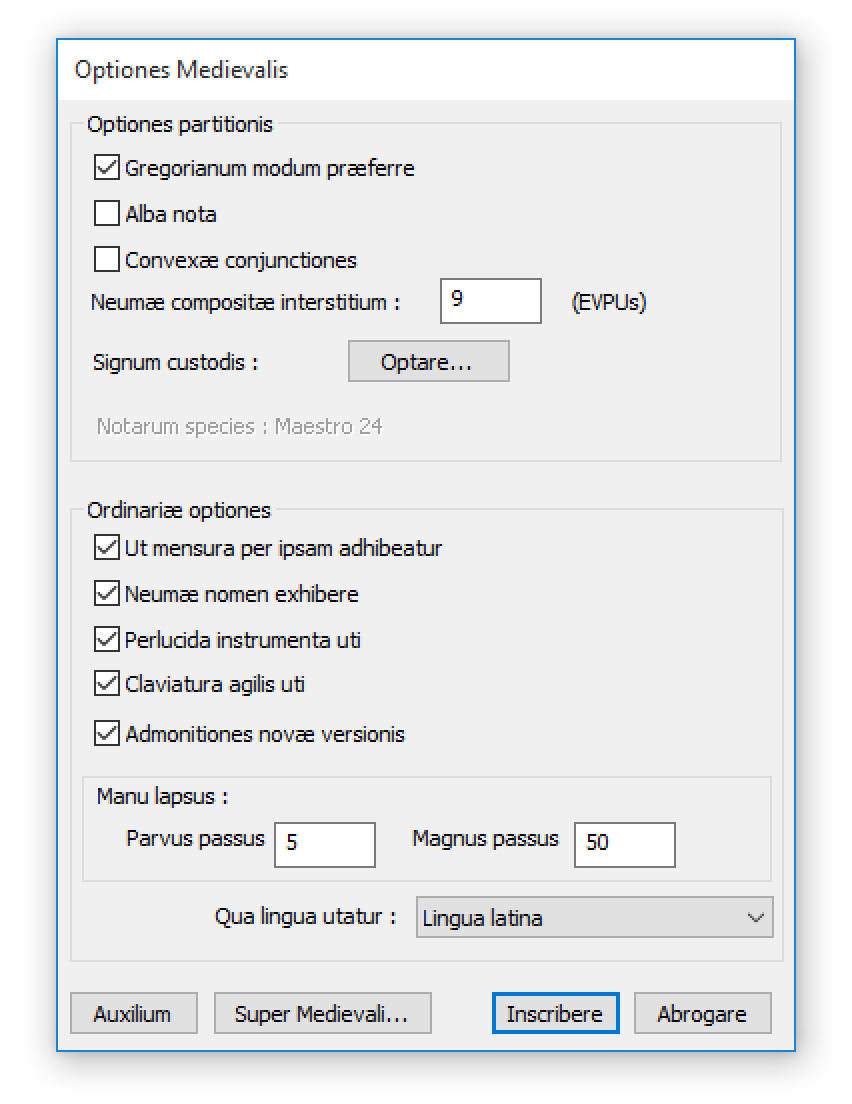The Medieval Options Dialog Box (latine)
The Medieval Options Dialog Box (Optiones Medievalis)
The Medieval Options dialog box is where you can adjust Medieval parameters for your scores or for the general behavior of Medieval 2.
There are two sections:
Document Options (Optiones partitionis)
(These options can be adjusted for each score.)
- Alba nota : check this if you want “white” shapes for notes or ligatures (but you can toogle any time between black and white with the Notehead tool.)
- Convexæ conjunctiones : check this if you want convex rather than concave ligatures.
- Gregorianum modum præferre : If checked, the high part of the podatus will have specific look.
- Neumæ compositæ interstitium : the default space inbetween parts when creating a compound neume.
- Signum custodis : this is where the default custos symbol can be chosen.
- Notarum species : this is normally “Neuma 24” be there might be more font style available in the future.
Global Options (Ordinariæ optiones)
(These options are global for all scores.)
- Ut mensura per ipsam adhibeatur : normally, you should keep this option always checked!
- Neumæ nomen exhibere : check this if you want Medieval to send you a friendly notification with the name of the neume just created.
- Perlucida instumenta uti : Medieval will fade the tool palette automatically if not in focus.
- Claviatura agilis uti: if you currently do not use Medieval, it is recommended to uncheck this.
- Admonitiones novæ versionis: check this if you want Medieval to (gently) notify you when an update is available.
- Manu lapsus, parvus/magnus passus : this rules the spaces used by the Nudge Tool.
- Qua lingua utatur : select your language of choice for Medieval 2 user interface (the other parts of Finale won't be affected!)

![]() See the Options dialog box in other languages:
See the Options dialog box in other languages:
Learn more
- Explore the Medieval menu.
- Explore the Tool Palette.
✶ ✶
✶
Created with the Personal Edition of HelpNDoc: Easily create iPhone documentation

